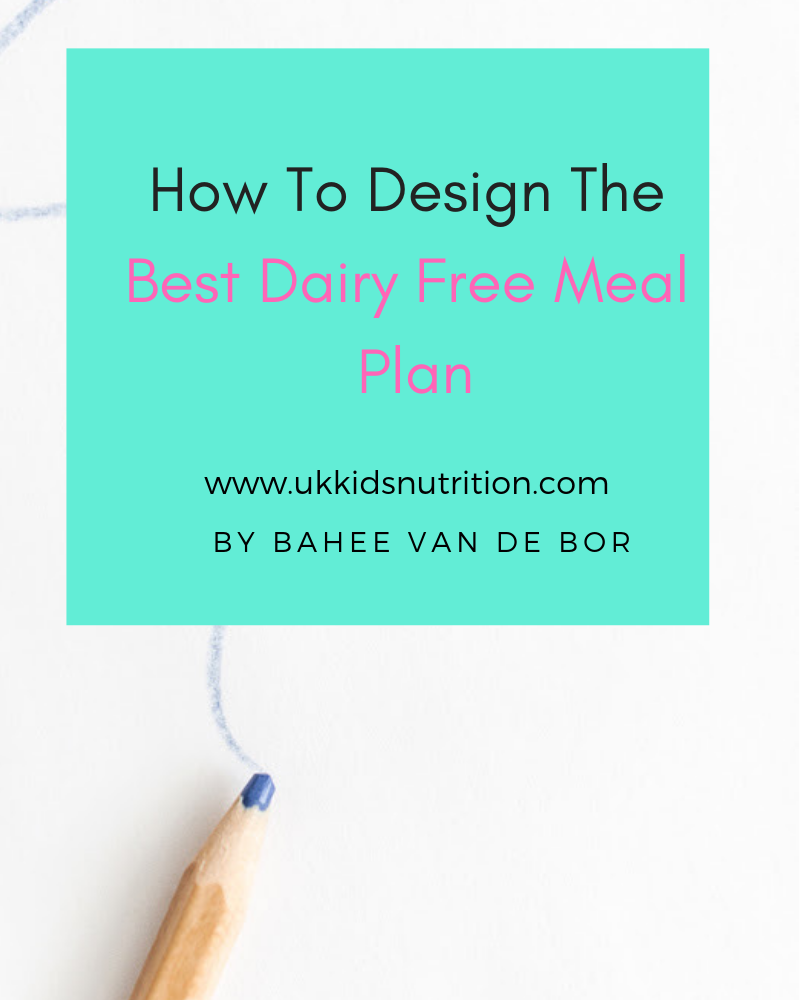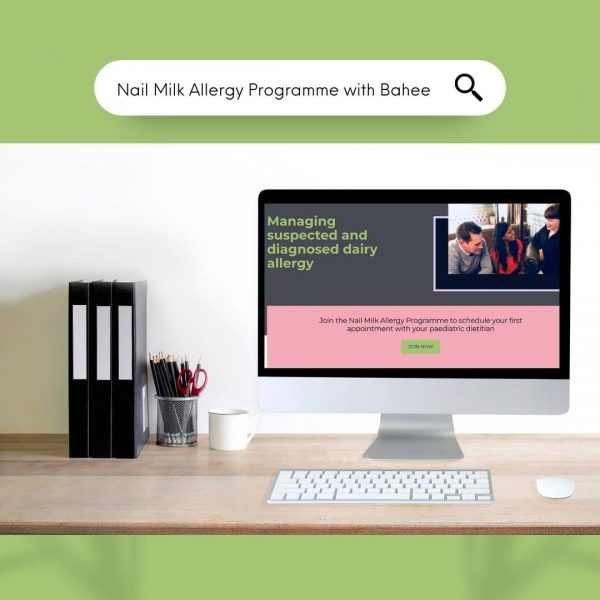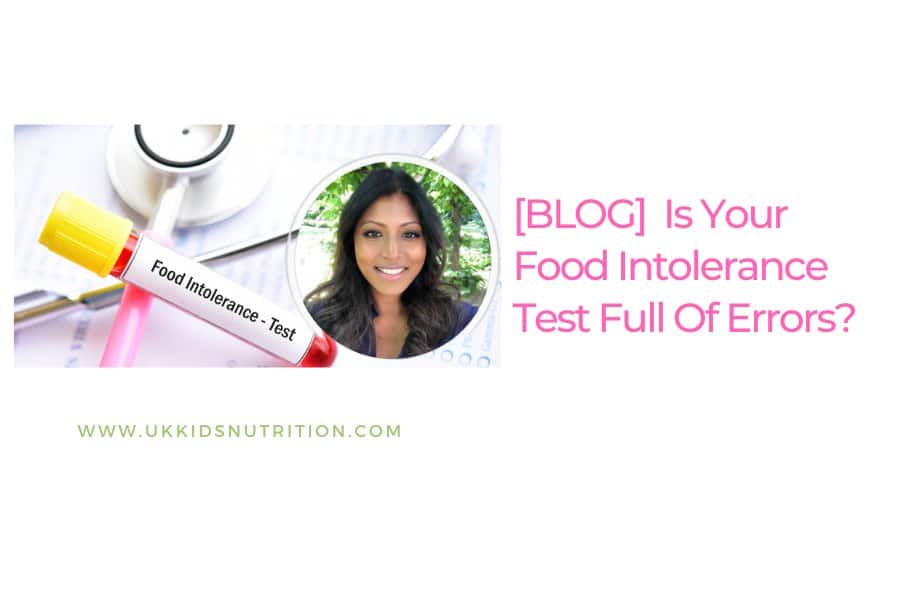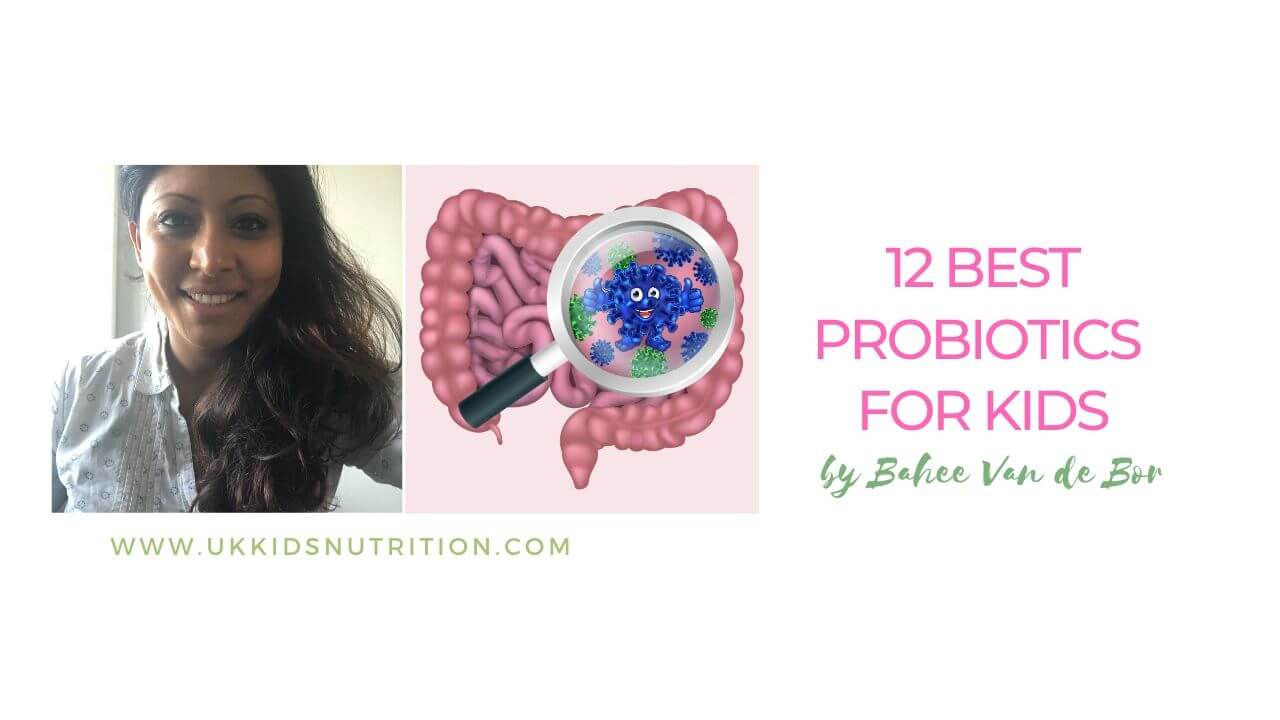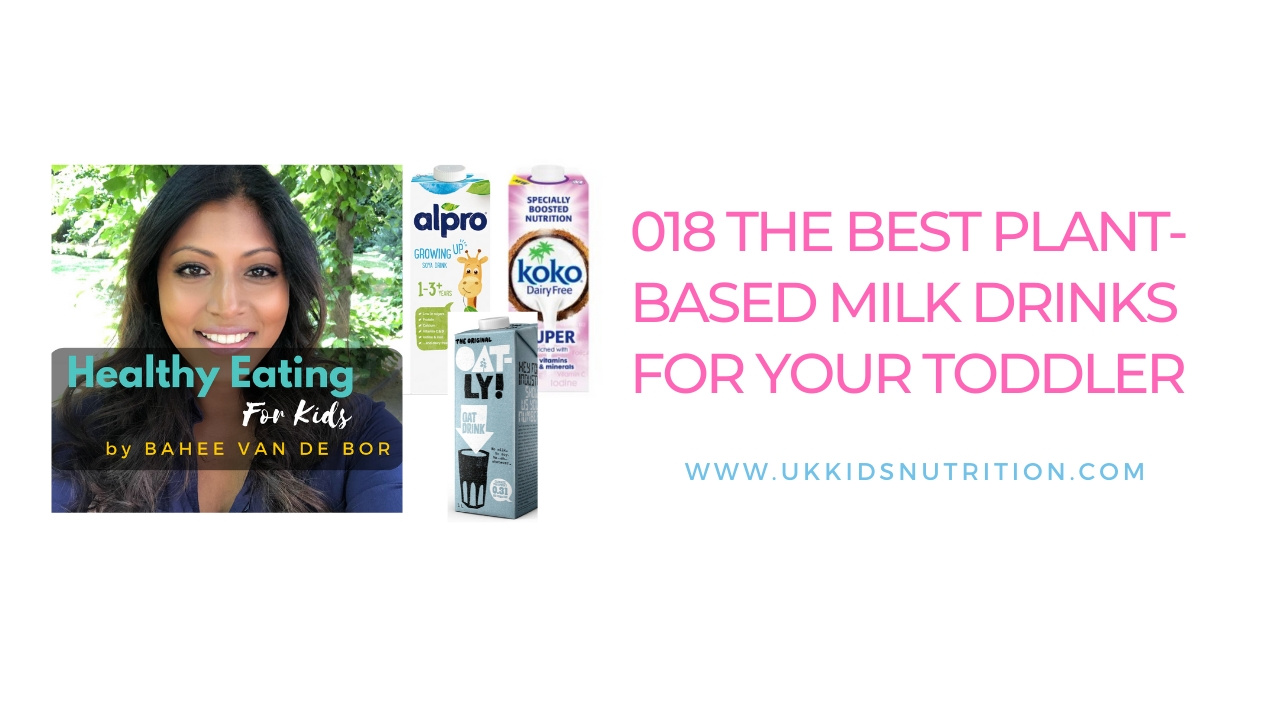Designing a dairy free meal plan
Managing your child’s dairy allergy can be confusing, frightening and complicated on your own.
A consultation with a registered paediatric dietitian is essential to help you accurately diagnose and manage your child with a dairy allergy and to help you design a nutritious dairy free meal plan.
Cow’s milk protein allergy should not be confused with lactose intolerance which is sometimes known as milk intolerance.
Whilst dairy allergy is an abnormal response by the body to the proteins found in dairy, lactose intolerance is completely different.
In lactose intolerance, the body has difficulty digesting a carbohydrate known as lactose that’s naturally present in dairy.
A strict dairy free diet is usually not required. Speak to your dietitian for bespoke advice.
On the other hand, in dairy allergy and depending on your child’s diagnosis, your dietitian may recommend that your baby or toddler follows a very strict dairy free diet.
This is when you will need to follow a process for designing the best dairy free meal plan that suits your child but also your family.
This article will help you design dairy-free toddler meals with suitable dairy-free foods for kids.
For babies diagnosed with cow milk protein allergy, you might also like to read all about dairy free baby food.
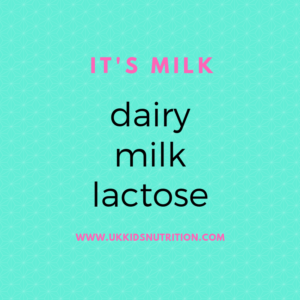
Step one when designing the best dairy free meal plan
Once you get home after your expert consultation with the paediatric dietitian, screen all food labels for the word ‘milk’.
Your dietitian will give you a list of words to look out for when reading the ingredients list which you can find in almost all packaged food items.
Putting together a dairy-free meal plan for kids isn’t too difficult once you have a step-by-step process to follow.
However, some foods contain hidden milk as an ingredient.
These foods are not dairy free friendly and are contraindicated on a dairy-free diet. Hence why you will need to make sure that you screen all food labels carefully.
In the UK, most packaged food items contain allergy advice and will have ingredients listed in bold if it contains any of the common food allergens such as milk.
This is especially important for dairy-free toddler snacks that you might buy whilst on the run.
It’s best to prepare a shopping list before you go grocery shopping so that you don’t waste time reading through labels on-site.
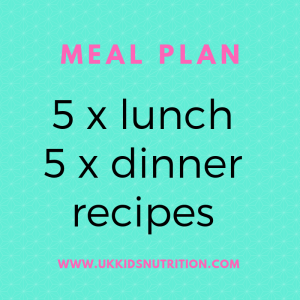
Step two in designing the best dairy-free meal plan
Did you know that the words ‘dairy’ and ‘milk’ are literally the same things when following a dairy-free diet?
Lactose is the natural carbohydrate found in dairy and milk.
If a packaged food item lists lactose as an ingredient, it’s impossible to guarantee that the product is not free from cow’s milk protein.
Sure lactose is not a problem in cow’s milk protein allergy, however, most manufacturers wouldn’t be able to guarantee that the lactose in a product isn’t contaminated with cow’s milk protein.
It’s, therefore, best to exclude these foods when researching dairy-free toddler foods.
As you know, for dairy allergy, it’s the protein present in cow’s milk that your baby or child will react to.
Your dietitian will most likely ask you to exclude foods containing lactose too.
So make sure that any food items that contain the words ‘dairy’, ‘milk’ or ‘lactose’ are removed from your child’s dairy-free menu plan.
Ask your dietitian for the full breakdown of the words on a food label that can suggest hidden milk protein.
Unfortunately, a dairy-free diet is not as straightforward as you might think.
It’s worthwhile booking a session with an experienced paediatric dietitian to help you with this journey.
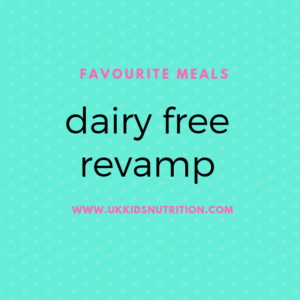
Step three for designing the best dairy-free meal plan
Make a list of your child’s favourite meals.
If your baby has been recently diagnosed with cows milk protein allergy and you are ready to start weaning, make a list of your favourite family recipes.
For easy dairy-free family recipes do visit the recipe section in this blog for inspiration.
By using clever substitute ingredients, you can easily revamp your child’s pre-loved recipes to suit a dairy-free diet.
Dairy-free recipes don’t always need specialist ingredients but for sauces, you could probably omit the milk or cream.
Here’s a clever trick. Now use oat or soy-based plant milk to make a delicious milk-free sauce.
To find out the best plant based milk alternatives for your toddler click here.
You could even use a thickener like cornflour to thicken the sauce if it’s runny or needs a creamy touch.
Cornflour is great because it is also naturally gluten-free. It’s perfect for children with multiple food allergies.
Which is handy if your child is also following a milk and gluten-free diet.
But don’t stop there. Considering that butter is a popular ingredient in many baking recipes, simply switch to a vegetable spread for an instant dairy-free makeover.
But be careful, some plant-based spreads do have milk solids as an added ingredient to boost flavour. It really is worth dedicating some time to reading food labels carefully.
Avocado is also fantastic in dairy-free baking as you’ll find in this easy avocado and chocolate milk free cake. Bookmark it for a special occasion.
In some cases, children following a dairy-free diet may also be asked to follow a soy-free diet.
This is because a small percentage of the proteins found in soy are similar and also found in cow’s milk proteins.
Not all children with a milk allergy will react to soy.
If your child reacts to these particular sequences of proteins, book a follow-up review session with your dietitian after the agreed trial period of the milk-free diet.
In the trial period if your child does not have complete symptom resolution, speak to your dietitian about the appropriateness of further exclusions such as soy.
It’s always worthwhile checking in with your children’s dietitian for further help with menu planning on multiple food allergies.
Step four for designing the best dairy-free menu plan
You don’t need hundreds of recipes.
The logic here is that if you can find five solid milk-free recipes for lunch and dinner, then you are good to go.
Think about it, a delicious fish cake recipe like this easy salmon and haddock fish cake recipe can feature at least twice in your dairy-free meal plan for the week.
What’s more, if you get stuck on recipe ideas, check in every fortnight for new recipes here on the blog.
You can also subscribe to my podcast/blog so that you can be notified every time I publish a new milk-free recipe for kids on the blog.
That’s it!
Kids’ nutrition can be challenging, but if you are faced with having to deal with a food allergy, writing a dairy-free menu plan can be a simple and effective way of managing family meals.
It will definitely save you time in the long run.
If you find the process daunting, then book a video consultation with me and I’ll give you tools and tips that will save you time and bring joy back into your family meals.
See the example below of a milk-free menu plan to get you started.
Example Dairy Free Meal Plan
Breakfast
Pear and chia powered oats (substitute whole milk with calcium-fortified plant milk)
Apple and cinnamon porridge (substitute formula with your GP prescribed dairy free formula)
Easy banana pancakes with pumpkin
Lunch
Herby tasty tuna and prawn Za’atar with spaghetti
Wholemeal fruit bread with a nut spread, fruit and dairy-free yoghurt
Snacks
Oat and raisin cookies with fruit
No added sugar banana and chocolate muffins and fruit
Fig and dark chocolate flapjack served with fresh fruit
A cup of calcium-fortified plant drink
Dinner
Chicken and mushroom tagliatelle
Roast butternut squash and coconut soup served with milk free bread
Bottom line – how to plan a dairy-free menu plan
- read labels to identify which cupboard items your child can have on a dairy-free diet
- remember dairy and milk all mean cows milk protein and won’t be suitable on a dairy-free diet for your child with a milk allergy. This includes foods with lactose even though it’s a type of milk sugar.
- write down your family’s favourite recipes and see how you can revamp these with easy dairy-free substitutions
- jot down 5 favourite recipes that will work for lunch and dinner then rotate these during the week, making extra portions and freezing as necessary.
- Don’t be afraid to tweak recipes until you have tasty variations that the whole family can enjoy and gradually build on your bank of dairy-free recipes.
- Subscribe to my podcast for helpful tips and advice.
Let Me Help
Would you like to meet a children’s dietitian who has successfully helped families solve their nutrition problems from around the world?
No matter what you are worried about, I’ll help you manage these with confidence.
